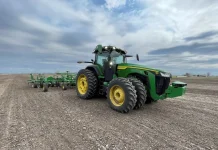
When a natural disaster strikes, you want to be prepared so you can get through it. The desire applies to protecting your retirement plan, too.
Hurricane Ian, the wildfires in Arizona, spring tornadoes in Kentucky, and the Montana floods are a few natural disasters that the United States has endured in 2022. According to the National Oceanic and Atmospheric Administration (NOAA), these, along with several other weather and climate disasters in 2022, amassed almost $30 billion in losses(opens in new tab) through the end of September.
No one can predict when disaster strikes, but when it does, being prepared could be the key to getting through it. At Retirement Planners of America(opens in new tab), we help retirees build a plan to help prepare them for different disasters and to mitigate risks to their retirement plan.
We believe it’s essential to keep your risk at a manageable level to you. We have a core value of discipline, which means we only want to take as much risk as necessary to accomplish your financial goals. So, if you’re taking more risk than you need to, when the disaster strikes or the bad times come, you could lose more than you are comfortable with.
Have a Strategy to Deal With Financial Storms
So, the first step to help determine how much risk is appropriate for you, and then work to build a portfolio that is designed to match the level of risk you’re taking. So, for us, that means being diversified in the makeup of what you have in your portfolio, or the collection of financial investments you have. They are part of the decision making leading you to the amount of risk necessary to accomplish your goals.
The next step: We at RPOA believe that you should have a protection strategy, where there are times when you take your entire portfolio to cash. This strategy, our Invest and Protect Strategy(opens in new tab), has helped us shield our clients from devastating losses during previous financial storms.
The strategy signaled us to help protect our clients from the current financial storm. That’s why we told our clients to get out of all equities in April, and soon after that, we also said to get out of all bonds, because of the storm the Fed was generating in the bond market with the rising interest rates. We like to think of this as taking our clients down into the storm shelter, where we’re riding out the storm.
We believe having a strategy that caps your losses is important. It was Kenny Rogers who sang, “You’ve got to know when to hold ’em, know when to fold ’em.” And there are times if there’s a bad enough financial storm coming, that maybe it’s time to fold ’em.
Prepare Financially Before Disaster Strikes
When disaster strikes, it’s all about preparation. We believe that preparation relates to your finances, too. So, if you’re still working, then we advise that you should have three to six months of expenses in cash. That way, if something terrible were to happen, either in of the market, or because of a natural disaster, you’ve got cash on hand to help cover you.
If you are retired, then we believe you should have six months to a year of expenses in cash. When the market is not working in your favor, we don’t want you to be drawing money out of your investments while they’re dropping in value at the same time. So, we want you to be able to live on that cash for a while, let the market go crazy and do what it does, and then consider going back to living on your investments. At that point, you’ll need to replenish your cash account, and rinse and repeat.
Put Together a Financial First Aid Kit
First aid kits can be necessary in disasters, and we feel the same goes for financial first aid kits. While we think your emergency fund in cash is a good place to start, but we also think having some actual cash in hand in case your ability to get cash is hindered. When natural disasters strike, electricity may be down, meaning the ATM won’t work, and credit card payments might not go through.
So, you probably want to have enough cash on hand to be able to buy food and water and whatever else you need for about a week. It doesn’t have to be thousands of dollars, but we think it should be enough to get you past that first week after a natural disaster.
Plan, Plan, Plan
A plan is integral to helping you get through tough situations, including natural disasters. Because we want you to have financial peace of mind, we advise you to make your plan about five to ten years before retirement. At RPOA, our goal is to help make your money last as long as you do.























